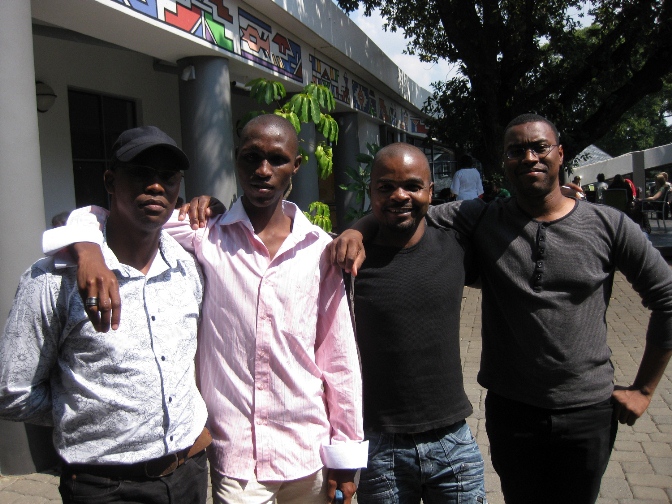 South African contemporary art and my experience with facilitating arts programming were the basis of my Fulbright project in Johannesburg. These interests started while I was an undergraduate at the Corcoran College of Art and Design in Washington, DC. The Smithsonian National Museum of African Art held two exhibitions that surveyed contemporary African Art. The diversity of materials and the directness to social issues resonated with me. During that time, I was working for artists, galleries and museums, helping to maintain and organize studios, exhibitions and collections.
South African contemporary art and my experience with facilitating arts programming were the basis of my Fulbright project in Johannesburg. These interests started while I was an undergraduate at the Corcoran College of Art and Design in Washington, DC. The Smithsonian National Museum of African Art held two exhibitions that surveyed contemporary African Art. The diversity of materials and the directness to social issues resonated with me. During that time, I was working for artists, galleries and museums, helping to maintain and organize studios, exhibitions and collections.
The Fulbright Program became an option while I was in graduate school at the University of Pennsylvania. Faculty members were helpful by referring me to readings about African cultures and art, which led me to develop my proposal’s context. The texts unexpectedly planted a seed that resulted in African cultural objects and ideas becoming incorporated into my artwork. After a conversation with a fellow student, I decided to apply for a Fulbright grant. Shortly after, I met Cheryl Shipman, the university’s Coordinator of Research and Fellowships (and Penn’s campus Fulbright Program Adviser), who was instrumental in explaining the application process and demystifying the program. The bulk of my proposal’s development came from research I conducted at the library, online and through writing numerous drafts. My hope was to engage with the contemporary South African art sector and to see how certain organizations had evolved from their origins as rebellious entities during the ‘80s and ‘90s to the present. The chair of University of Witwatersrand’s Postgraduate Arts, Culture and Heritage Management Program wrote my letter of affiliation. I introduced myself by emailing her out of the blue and sent her a draft of my proposal. After a positive response, I asked if she would write the letter.
In South Africa, I was a graduate student in the University’s management program. The management courses I took included leadership and policy, arts marketing and fundraising, and operational skills. Additionally, I conducted interviews with local artists and administrators regarding their relationships with local, provincial and national government art agencies.
Outside of school, I became very familiar with the local art scene by befriending artists and attending exhibitions and events. Collaborating with a local artist, I worked on a group exhibition. I juried images from a U.S. Embassy class “Photographing Your Environment,” for kids from Pretoria’s Mamelodi Township. I also had a radio show on the University of Witwatersrand’s VOW (Voice of Wits) 90.5 FM.
Since my time in South Africa, the Fulbright Program continues to be an important part of my life. As a 2012 Fulbright Alumni Ambassador, my responsibility is to promote the program, educate others about the application process and share my overseas experiences. Currently, I am adjunct faculty at the Corcoran College of Art and Design and Northern Virginia Community College, work full-time at a photography lab in Maryland, and continue to expand my artistic practice.
For those interested in applying for a research/study Fulbright grant, specificity is essential in developing your project. Pursuing a research topic that is important to you and that will allow you to be of service to others in a pertinent location is crucial. The “to be of service” component is about reciprocal relationships. How can a place and community assist you and your goals? How can you assist them? For artists, the Fulbright Program is perfect. It encourages autonomous projects requiring individuals from around the world to inform and engage with each other and, consequently, long-lasting relationships and experiences.
Photo: Antonio McAfee (right), 2009-2010, South Africa, with a few of his Arts and Culture Management Classmates from the University of Witwatersrand
